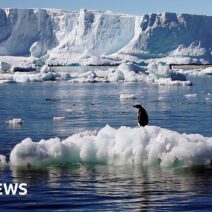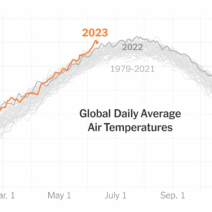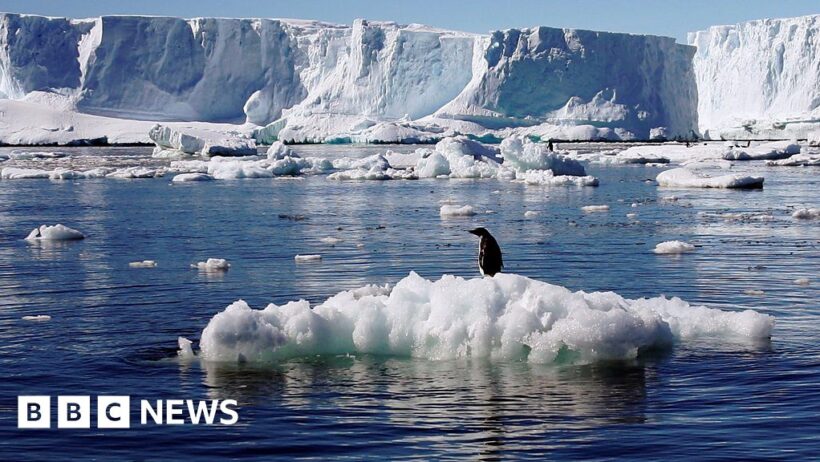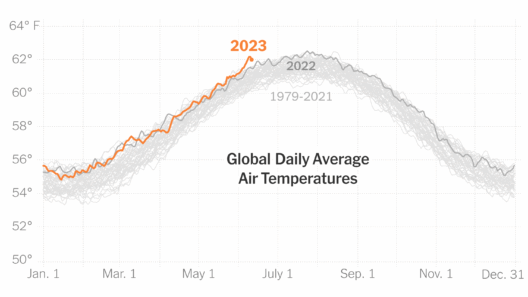The phenomenon of melting ice caps has become an undeniable testament to the escalating impacts of global warming. This alteration of the Earth’s cryosphere is more than just an alarming trend; it encapsulates profound implications for both the planet and humanity as a whole. With the very essence of our polar ecosystems at stake, it is essential to delve deeper into the mechanisms behind this transformation, explore its implications, and navigate the path forward.
Ice caps, forming the capstones of polar regions, harbored intricate ecosystems and served as critical indicators of climate stability. These vast expanses of ice, predominantly found in Greenland and Antarctica, reflect sunlight and regulate the global climate. However, the observable retreat of these ice masses has become a siren call, provoking urgent inquiry into the factors fuelling this deterioration.
The primary driver of ice cap melting is, quite conspicuously, global warming, primarily exacerbated by human activities. The combustion of fossil fuels, deforestation, industrial processes, and agricultural practices emit vast quantities of greenhouse gases, predominantly carbon dioxide and methane, into the atmosphere. These gases effectively trap heat, leading to elevated global temperatures. As the Earth warms, polar regions experience disproportionate temperature increases; the Arctic, for instance, has warmed approximately twice as fast as the global average. This phenomenon, known as Arctic amplification, accelerates the disintegration of ice caps and glaciers.
In addition to direct temperature rise, the ocean’s warm waters play a pivotal role. As the atmosphere warms, it inexorably leads to higher sea surface temperatures. Warm water intrusions can attack glaciers from below, hastening their retreat. The interaction between rising sea levels and meltwater runoff creates a self-reinforcing cycle, wherein the melting ice accelerates warming effects through a process known as albedo feedback. When ice retreats, the darker ocean or land surface beneath absorbs more sunlight, further exacerbating warming.
However, the phenomenon of melting ice caps is intriguing not solely for its immediate scientific ramifications but also for its broader ecological and geopolitical implications. The juxtaposition of ecological fragility and its military-strategic implications highlights the interconnectedness of various spheres. The gradual unearth of new shipping routes in the Arctic due to melting ice has sparked both excitement and trepidation among nations seeking to establish territorial claims amidst the potential for resource extraction. As the ice recedes, hydrocarbon fields, rare earth minerals, and rich fisheries increasingly come into focus, prompting frictions among nation-states.
Moreover, the loss of ice caps destabilizes ecosystems far beyond polar regions. The polar bears and seals that rely on stable ice for hunting face dire consequences; their survival is jeopardized by dwindling habitats. In conjunction with the demise of specific species that depend on these ecosystems, the ramifications ripple through the food web, affecting migratory patterns and ecological balances. Ultimately, as the complex fabric of life becomes unspooled, what is lost is not solely a species but a wealth of biodiversity that contributes to the resilience of entire ecosystems.
The melting ice caps also pose severe risks to human populations, particularly those residing in coastal areas. The projected rise in sea levels due to melting ice caps threatens to inundate significant portions of land, displacing millions of people. It is estimated that by 2050, tens of millions may be displaced worldwide due to rising sea levels. As nations grapple with the imminent consequences, the urgency for effective adaptive strategies becomes paramount.
Policy responses across the globe are beginning to reflect the gravity of the crisis. International accords, such as the Paris Agreement, aim to mitigate greenhouse gas emissions, and many nations are investing in renewable energy sources, reforestation, and sustainable practices. However, the pace of policy adaptation often lags significantly behind the pace of environmental change, and much remains to be done.
Furthermore, individual action—although seemingly minor in the face of vast systemic challenges—can accelerate transformative change. Simple actions, like reducing energy consumption, embracing sustainable dietary practices, and advocating for environmental policies, accumulate into a larger cultural shift toward sustainability. Education and awareness remain lynchpins in empowering communities to engage with environmental issues proactively.
In conclusion, the question of whether ice caps are disappearing due to global warming is not just a scientific inquiry; it intertwines with ecological, social, and geopolitical narratives. The melting of ice caps signifies more than mere environmental change; it serves as a barometer for our planet’s health and a clarion call for collective action. While the crisis is formidable, it is not insurmountable. By knitting together scientific inquiry, policy interventions, and grassroots mobilization, humanity stands a chance to rewrite the trajectory of this pressing issue and safeguard not just polar ecosystems but the entire planet. The ice is melting, but so too can our resolve catalyze action for a more sustainable future.





